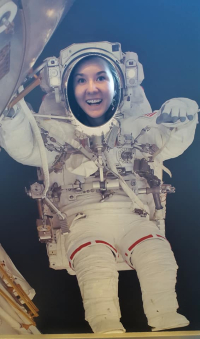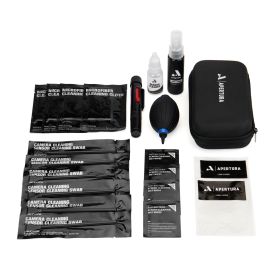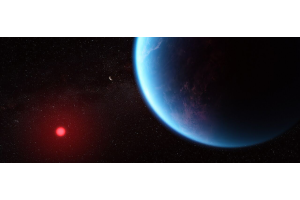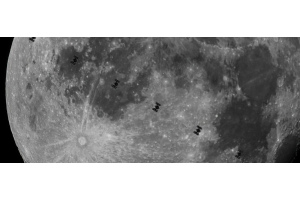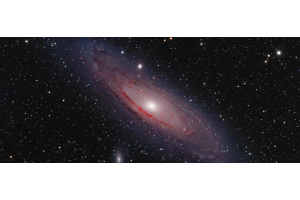
There’s nothing like getting a new telescope. Everything’s still shiny and nice, it’s all aligned properly, and it’s like playing with a new toy. Of course, the buzz wears off and while you still appreciate having a telescope, you miss the feeling you had when it was brand new. At this point, a lot of telescope owners turn their eyes to the newest tech and begin shopping around for an upgrade. Instead of going this route, however, why not just give your telescope a tune-up and give it a new life? Here’s how to do just that:
Collimation
You’re not going to be very happy with your telescope if it’s misaligned. No matter how much you try to focus it, and no matter how close the object is you’re looking at, you’ll get nothing but a blurry mess. When your mirrors are misaligned, the light collected won’t be focused correctly. In order to fix this, you need collimation tools.
Collimation tools come in many different varieties, including lasers, eyepieces, and caps. Your choice of tool depends largely on your personal preference. Lasers are generally too finicky for beginners, while Cheshire eyepieces and collimation caps are better for beginners and much friendlier as far as price is concerned. You can also collimate without tools, but it’s a good idea to at least use a cap until you’re more familiar with the process.

Optics Cleaning Kit
Sometimes, all it takes is a good clean to make something like new again! Now, telescopes do not need to be cleaned often. When they do need to be spruced up is when there’s excess dust or dirt, particularly on the optics. While you do need to be extra careful when you’re dealing with a telescope, there are ways you can safely clean yours without affecting its functionality. First, always choose cleaning solutions that are made specifically for telescopes. Compressed air is a great way to get dust particles off and reduces the risk of scratching your optics. You can also find cleaning fluid made for optics, but make sure the cloth or tissue you use is also lens-grade. Less is more when it comes to cleaning fluid, and make sure you don’t apply pressure on the optics.
Centering Eyepiece
When choosing accessories for your telescope, you probably agonized over which eyepieces to get. But did you consider a centering eyepiece? These eyepieces can help you get even more out of your telescope, particularly if you’re into astrophotography or have a computerized telescope.
Centering eyepieces work the way they sound. They’re typically low-power, and their defining feature is the illuminated crosshairs that help you with alignment. With a centering eyepiece, you can align a computerized GoTo system and your finderscope, center a star for astrophotography, and achieve accurate polar alignment. It’s not a required tool, but it is one that will help you get more out of your telescope and stargazing experience.
Cooling Fan
Waiting for a telescope to cool down can be like waiting for paint to dry, and even when it’s done you might not be sure of the results. One issue that plagues larger telescopes is tube currents, which form when warmer air escapes into the cooler ambient air and becomes trapped in the telescope’s tube. Hence, the name tube currents. When your telescope and the ambient air are at similar temperatures when they come in contact, tube currents aren’t really a concern. They become more of a problem when you take your telescope from your toasty warm house and introduce it to much colder air outside.
Larger telescopes lose heat more slowly, meaning you could be waiting around an hour or more for the temperatures to equalize. Instead of waiting and still potentially having to deal with tube currents, you can give your telescope a helping hand with a cooling fan. Cooling fans attach directly to your telescope and can significantly reduce the cooling time, giving you more time to stargaze. However, this tip mainly applies to Dobsonians as cooling fans are not available for all telescopes.

Stabilize the Tripod
One final way to tune up your telescope is to look at what it’s mounted on. Is your tripod sturdy, strong, and ready to continue doing its job for years to come? Or is it possibly getting a bit wobbly, as if the burden of holding a telescope has become too much for it? We don’t often think about it, but having an unstable tripod can significantly affect how well your telescope works. A tripod that subtly shakes or doesn’t have a strong hold can cause alignment issues and even damage your telescope if it collapses.
Luckily, there are several ways you can fix stability issues. First, check that all the screws and other bits holding everything together are properly tightened. Hauling your telescope back and forth can loosen things up, so give all the components a good tightening. Next, you can either fill the legs with sand to make them heavier, or if this isn’t an option, you can find something to hang from the center struts in between the tripod legs that will add weight. Don’t add anything too heavy, but maybe try hanging a shopping bag with a can of food and see if that makes things feel more steady. Finally, you can purchase vibration suppression pads to stabilize your mount on any surfaces that are susceptible to vibration, such as a backyard deck.
If all else fails you can get a new tripod, but chances are these easy fixes will give you all the stability you need.
Telescope maintenance doesn’t have to be expensive, and you don’t need to upgrade the whole thing to get more out of the experience! With a few simple tricks and some TLC, your telescope will be good as new.

Learn More
Interested in learning more about your telescope? Not sure where to begin? Check out our Astronomy Hub!
This Article was Last Updated on 08/11/2023

